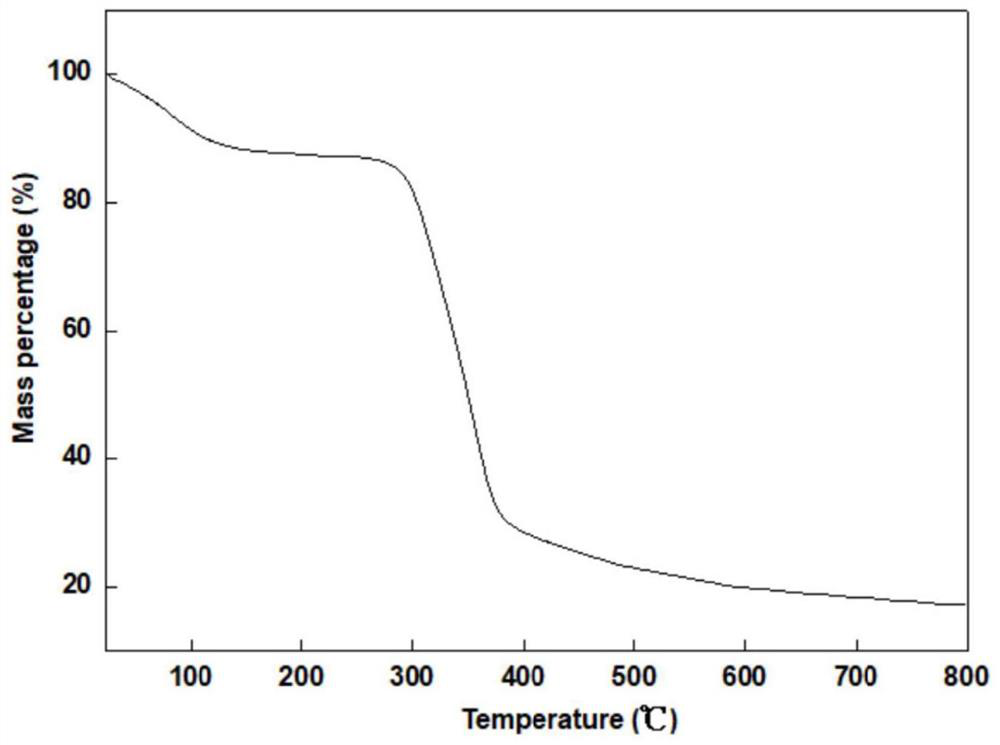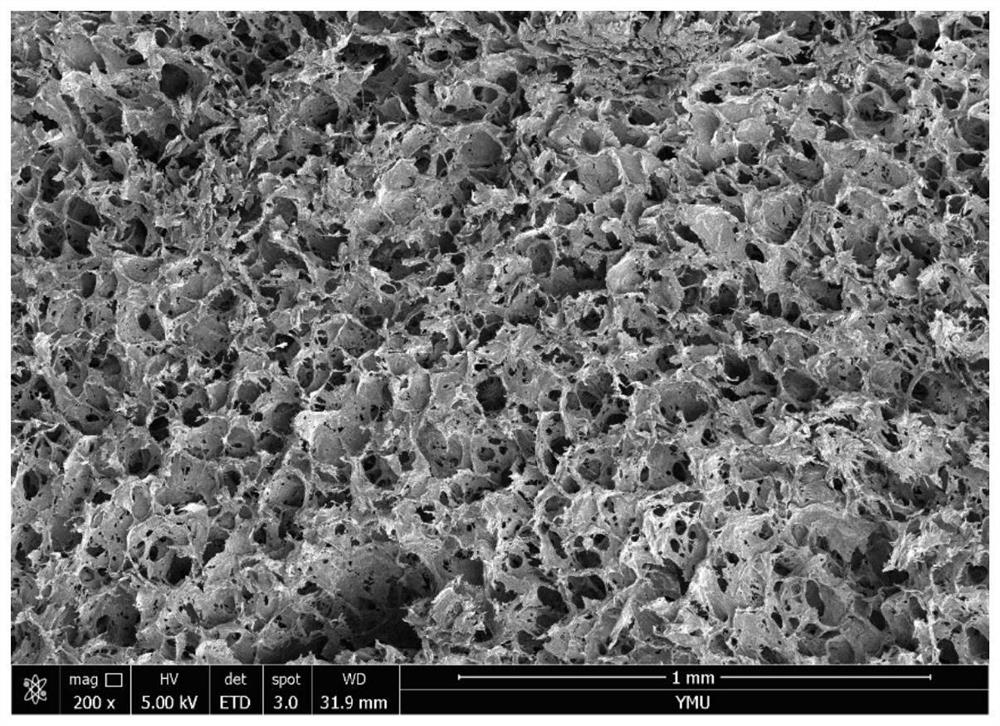Hydrogel composite material with porous structure as well as preparation and application thereof
A composite material and porous structure technology, applied in the direction of luminescent materials, chemical instruments and methods, can solve the problems of poor biocompatibility, difficult biodegradation, rare rare earth complex hydrogel materials, etc. The effect of inexpensive, good compressive strain characteristics
- Summary
- Abstract
- Description
- Claims
- Application Information
AI Technical Summary
Problems solved by technology
Method used
Image
Examples
preparation example Construction
[0039] The preparation method of the hydrogel composite material of the above-mentioned porous structure comprises the following steps:
[0040] S1. Add CC with a mass percentage concentration of 0.5-4% to the CNF sol, and stir at room temperature until fully dissolved;
[0041] S2. Add epichlorohydrin with a volume ratio concentration of 5-20% and sodium hydroxide with a molar concentration of 0.4-1.5M into the sol obtained in step S1, and fully stir evenly;
[0042] S3. Pour the sol obtained in step S2 into a suitable mold, then put it into a refrigerator, and freeze it at -25°C for 24 to 72 hours;
[0043] S4, thawing the jelly obtained in step S3 in water, and washing with a large amount of deionized water to obtain a hydrogel;
[0044] S5. Soak the hydrogel obtained in step S4 in a hydrochloric acid solution, and then wash it with a large amount of deionized water;
[0045] S6. Soak the hydrogel obtained in step S5 into EuCl with a molar concentration of rare earth europi...
Embodiment 1
[0052] Add 25 mg of CC to 5 mL of CNF sol, and stir magnetically at room temperature until CC is fully dissolved. Then add 0.25mL epichlorohydrin, stir evenly, then add 2mL 0.4M sodium hydroxide solution, stir the above sol evenly, place it in a -25°C refrigerator for 24h, and then put the obtained jelly in deionized water Thaw, wash with plenty of deionized water, and soak the resulting hydrogel material in 20 mL of 0.01M EuCl 3 12h in aqueous solution, then wash the hydrogel with a large amount of deionized water, then soak the hydrogel material in 20mL 0.01M 2-thienoyltrifluoroacetone deprotonated sodium salt solution for 12h, and then wash with a large amount of deionized water Washed with water to obtain a hydrogel composite material.
Embodiment 2
[0054] Add 30 mg of CC to 5 mL of CNF sol, and stir magnetically at room temperature until CC is fully dissolved. Then add 0.3mL epichlorohydrin, stir evenly, then add 2mL 0.5M sodium hydroxide solution, stir the above sol evenly, place it in a -25°C refrigerator for 30h, and then put the obtained jelly in deionized water Thaw, wash with plenty of deionized water, and soak the resulting hydrogel material in 20 mL of 0.15M EuCl 3 12h in aqueous solution, then wash the hydrogel with a large amount of deionized water, then soak the hydrogel material in 20mL 0.1M 2-thiophenoyltrifluoroacetone deprotonated sodium salt solution for 12h, and then wash with a large amount of deionized water Washed with water to obtain a hydrogel composite material.
PUM
| Property | Measurement | Unit |
|---|---|---|
| Decomposition temperature | aaaaa | aaaaa |
Abstract
Description
Claims
Application Information
 Login to View More
Login to View More - Generate Ideas
- Intellectual Property
- Life Sciences
- Materials
- Tech Scout
- Unparalleled Data Quality
- Higher Quality Content
- 60% Fewer Hallucinations
Browse by: Latest US Patents, China's latest patents, Technical Efficacy Thesaurus, Application Domain, Technology Topic, Popular Technical Reports.
© 2025 PatSnap. All rights reserved.Legal|Privacy policy|Modern Slavery Act Transparency Statement|Sitemap|About US| Contact US: help@patsnap.com



